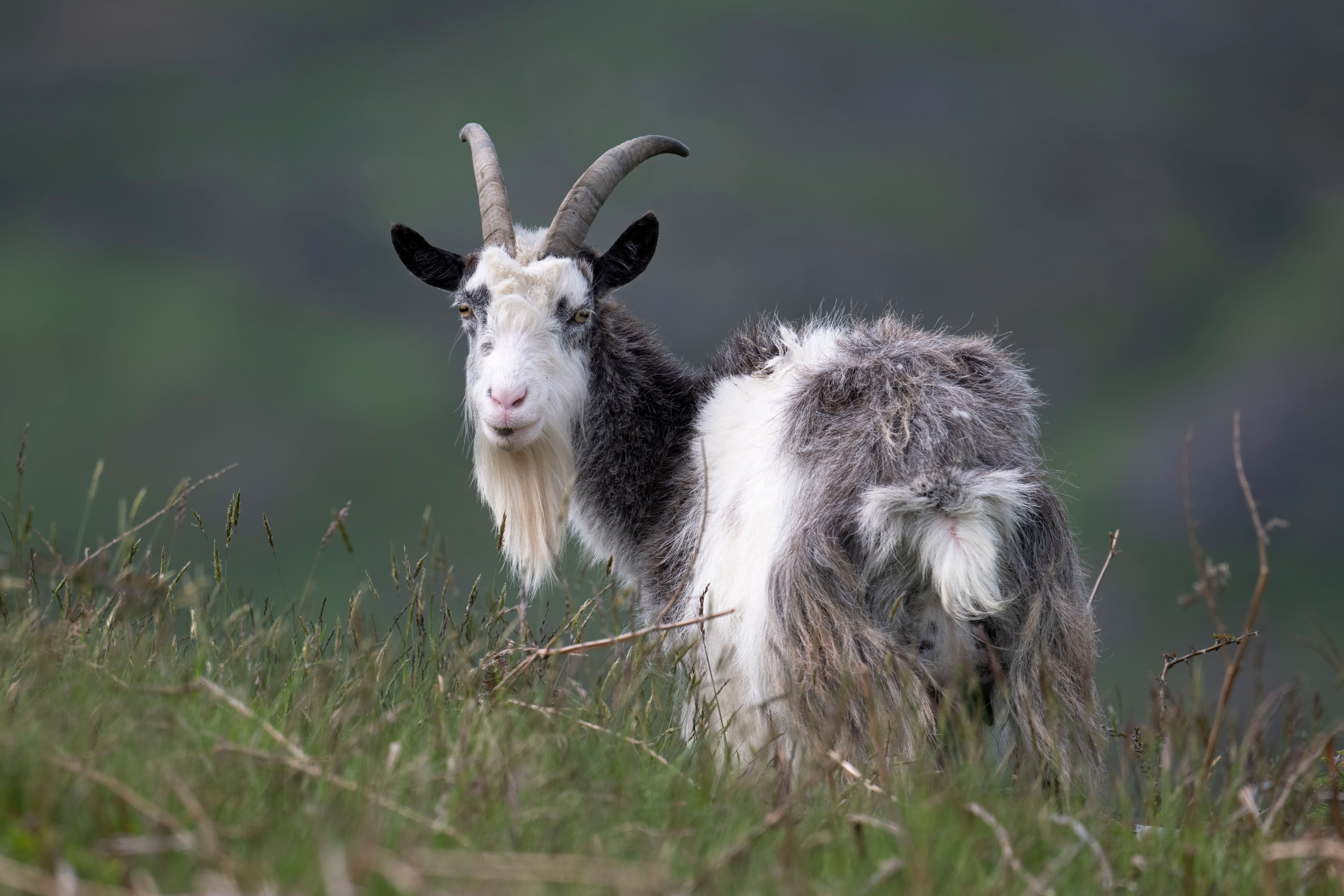Ancient wild goat added to rare breeds watchlist to support conservation
The Cheviot goat, whose population centres around a herd living wild in Northumberland, is a link to UK’s original domesticated goats, experts say.

Your support helps us to tell the story
From reproductive rights to climate change to Big Tech, The Independent is on the ground when the story is developing. Whether it's investigating the financials of Elon Musk's pro-Trump PAC or producing our latest documentary, 'The A Word', which shines a light on the American women fighting for reproductive rights, we know how important it is to parse out the facts from the messaging.
At such a critical moment in US history, we need reporters on the ground. Your donation allows us to keep sending journalists to speak to both sides of the story.
The Independent is trusted by Americans across the entire political spectrum. And unlike many other quality news outlets, we choose not to lock Americans out of our reporting and analysis with paywalls. We believe quality journalism should be available to everyone, paid for by those who can afford it.
Your support makes all the difference.Goats which live in a wild herd in Northumberland and are a crucial link to ancient domesticated goats have been added to a watch list of rare breeds.
The Cheviot goat, whose population centres on a wild herd in the Cheviot Hills and is considered an “authentic remnant” of Britain’s original primitive goats, has been added to the Rare Breeds Survival Trust (RBST) watchlist.
The watchlist is the RBST’s annual report on the conservation status of the UK’s native livestock and equine breeds, highlighting which are the most endangered.
The trust said that there were only an estimated 450 Cheviot goats – including the wild herd and animals held by private breeders and for conservation grazing schemes – and only 86 females producing offspring in 2023.
So it is adding the goat to the watchlist’s “feral population” category, recognising the breed as a rare native feral population to support its conservation.
Primitive goats have existed in Britain for thousands of years, from those kept by subsistence farmers in the Bronze and Iron Ages through to herds on medieval manors, prized for their milk, meat, skin, hair and tallow.
These original primitive goats had died out as domesticated animals by the mid-1900s as breeds were mixed to increase dairy production, but the bloodlines survived in some long-standing, isolated feral herds which had become established due to the animals’ tendency to escape, the RBST said.
According to legend, the goats of the Cheviot Hills originated when the monks of Lindisfarne abandoned the monastery in 875AD, and as they herded their livestock along the way, the goats were too feisty to control, escaped and were left to roam in the area, the charity said.
Cheviot goats are extremely important both culturally and genetically, and they are also excellent for conservation grazing
Found in in College Valley, Newton Tors and Yeavering Bell in Northumberland’s Cheviot Hills, the College Valley Cheviots are still left today as a completely wild herd with minimal intervention.
Rare Breeds Survival Trust chief executive Christopher Price said: “Cheviot goats are extremely important both culturally and genetically, and they are also excellent for conservation grazing.
“They are a crucial link to the UK’s original primitive goats that were so relied upon by generation after generation, from the Bronze and Iron Ages, through medieval times and up to the smallholders of the 19th and early 20th centuries.”
And he said: “Without the isolated feral College Valley Cheviot herd, these genetics would have been lost irretrievably.
“We are pleased to recognise the Cheviot goat on the RBST Watchlist and we look forward to working with the British Primitive Goat Research Group and others to support the survival of this population long into the future.”
The trust said the Cheviot goat is hardy, with a thick coat, strong hooves and curved horns, and is excellent for conservation grazing – the practice of using livestock to graze land in ways that specifically support wildlife and habitats.
It also said breeding programmes, monitoring for the risks of inbreeding, seeking to increase the number of keepers actively breeding the goats, preventing intermixing with non-Cheviot bloodlines, and mitigating risks from weather and disease, could support the goat’s future.
Shirley Goodyer, from British Primitive Goat Research Group, said: “We have been striving for a long time to maintain the genetic integrity of this historically well documented herd which displays all the phenotypic characteristics expected of our ancient British Primitive goat.
“Recognition by the RBST will greatly help to increase awareness and highlight the importance and value of this iconic breed.”